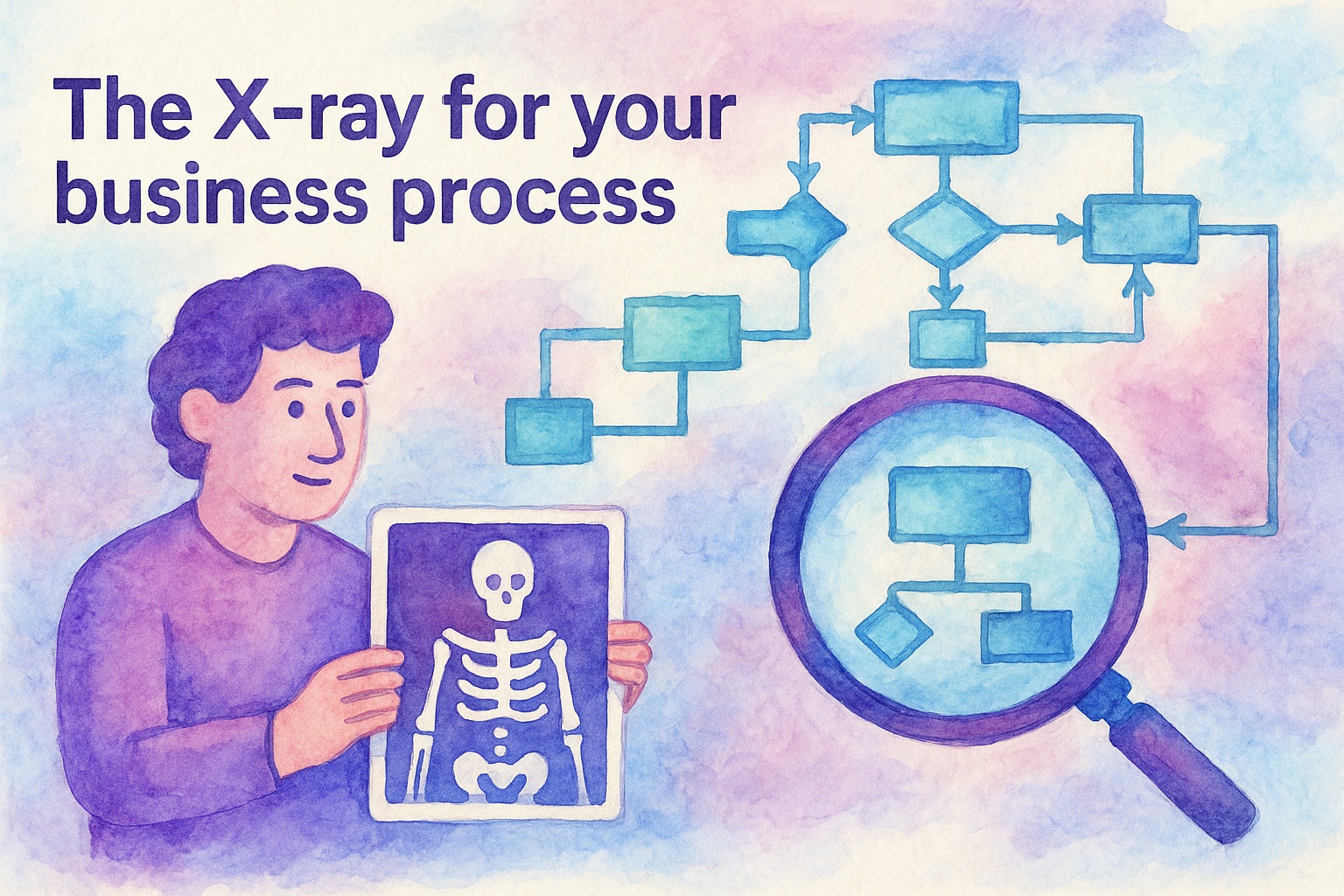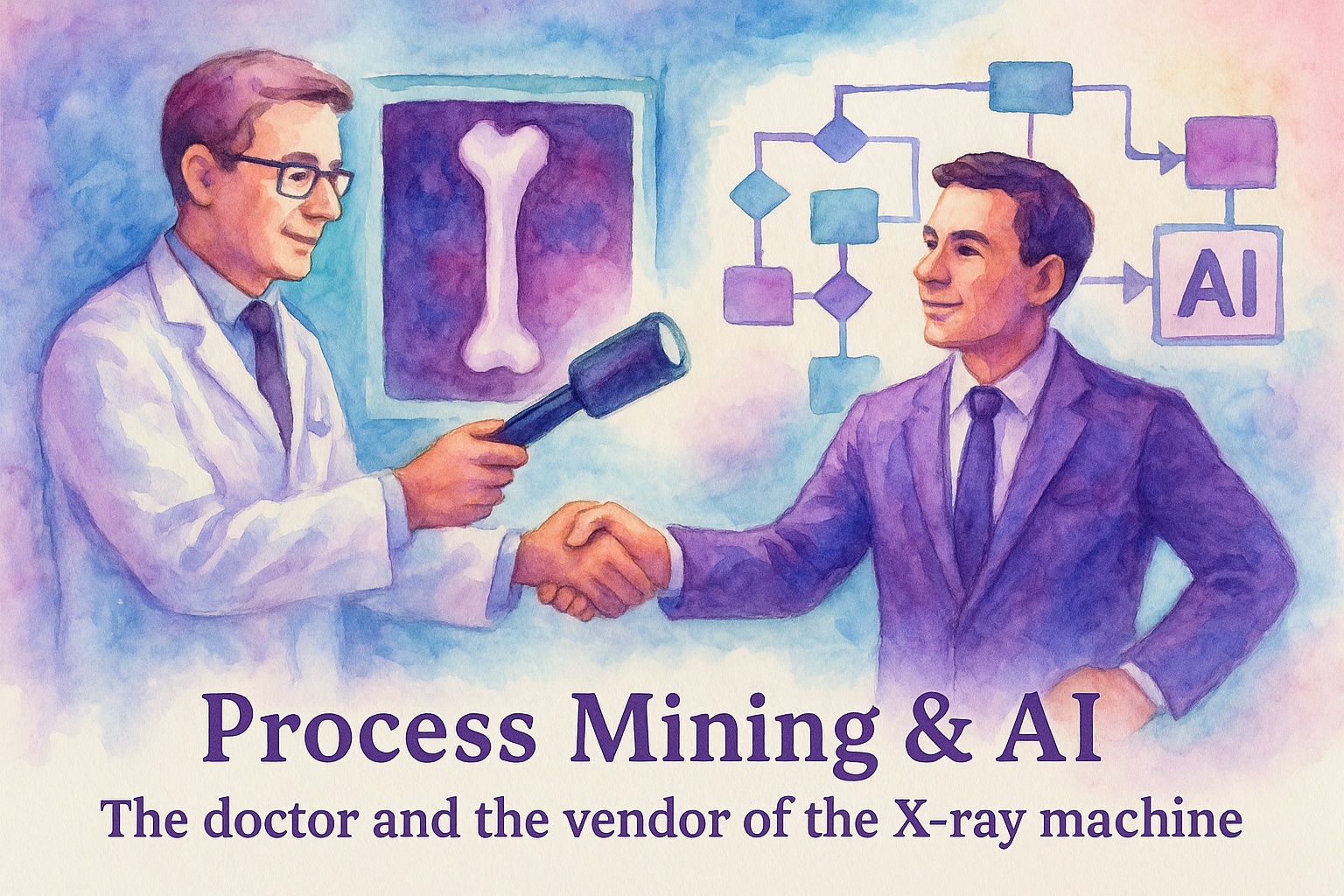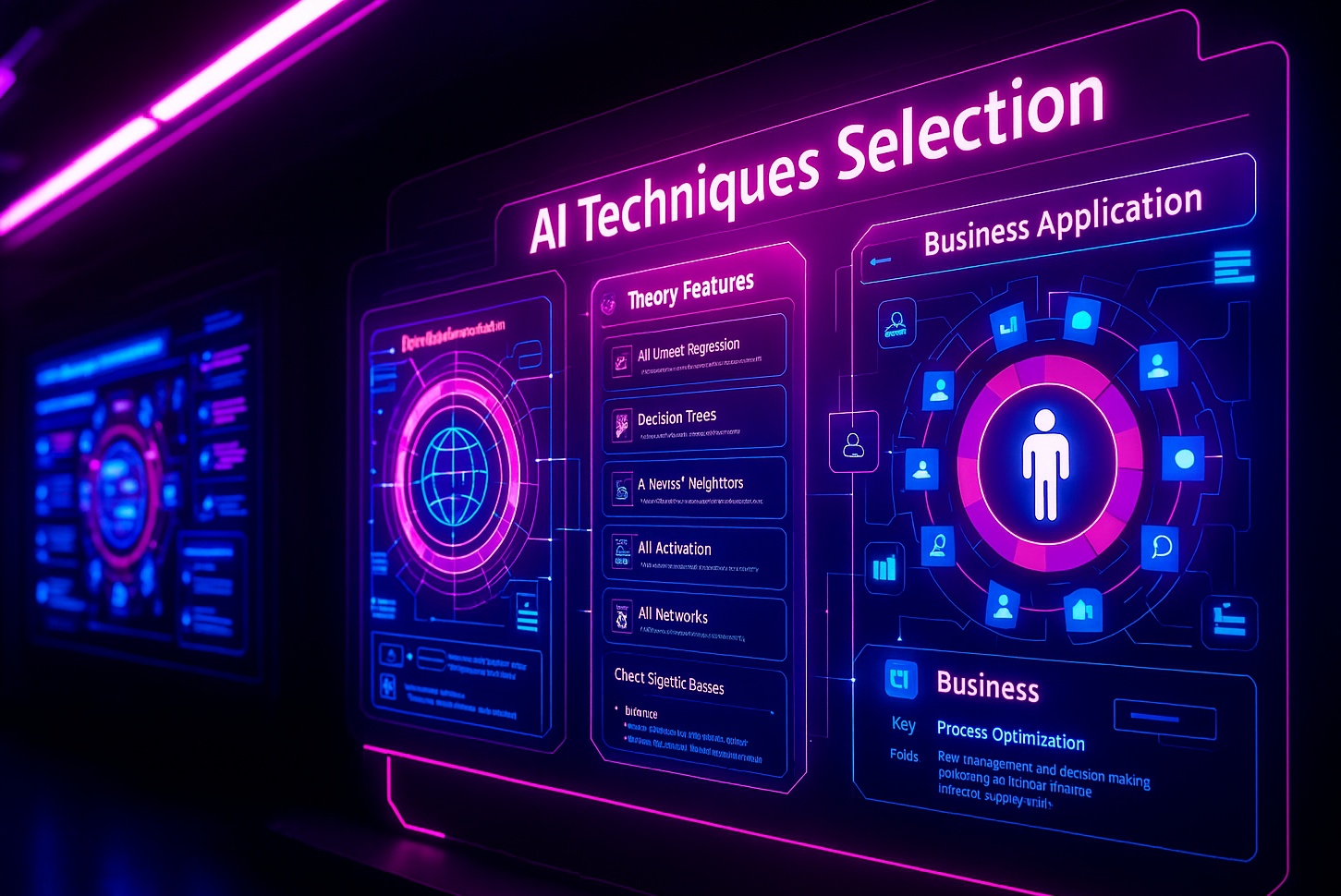
Transform your business processes with Process Mining & AI
Ask business questions. Get instant process and data insights.
Intellifold combines Data Analytics, Process Mining, Visualisation, Alerts, and AI into a single platform designed for monitoring & improving complex and data-heavy business processes.
Visualise process flows, bottlenecks, and control failures in real-time. Our Process Mining & AI solutions and consultancy services help you implement process improvement and effective automation. We do this with medium to large businesses across industries.
Solutions that show every process step, variation, and duration. Monitor live with dynamic dashboards and analytics.
Perform root causes analyses, reduce bottlenecks, and ensure compliance. Achieve measurable results fast.
The automation roadmap and targeted automation implementation. Show impact, track ROI, and deploy at scale.
Gain full process transparency, spot inefficiencies instantly, and drive automation with real-time analytics and AI-powered monitoring across your business operations.




Our technology acts like an X-ray for your business processes, visualising every step, duration, and process variation. Revealing inefficiencies, non-compliance, and showing opportunities for improvement.

Pinpoint issues, streamline operations, and drive measurable gains. Track metrics and user behavior in real-time. Actionable insights for smarter decisions, targeted actions across people, systems, and technology for lasting results.

Ask any question about your process or data. Our platform automatically generates the data queries and the interactive graphs, empowering everyone in your team to make better decisions.

Identify the use cases, quantify ROI, prioritise initiatives, and deploy scripts, bots, and AI where they matter most. Achieve efficiency at scale and measure the impact.

Monitor processes live, receive instant alerts, and ensure ongoing compliance. Reduce risk and maintain control effortlessly. Audit evidence and compliance reporting directly available.

Select the package that matches your process goals. Prices listed are in USD.
Spin up your first process flow in under ten minutes, no credit card required. See our platform in action with your data.
Single user account, core functionality, data volume limits apply.
CORE features
Access to interactive demo solutions
Load your own data (flat file upload)
Drag-and-drop dashboard builder
Automatic end-to-end process flows
From proof-of-value to enterprise-grade insights, delivered by our experts.
($18K to $74k AUD)
Price based on source systems, solution complexity, and functionality use.
TAILORED Solution build
Custom process events
Custom process analytics
Real-time data feeds
Root cause analysis
Predictive analytics
Alerts & notifications
End-user & technical training
Improvement roadmap
Keep the insights flowing with predictable spend and the right support. Add-on services for training, changes, and process improvement.
($1.2K per month AUD)
Price for default hosting within data limits
20% discount for 3-year plan
comprehensive platform
Dedicated account manager
Full platform functionality
Up to five user accounts
Custom data connectors
Local cloud hosting
Compliance reporting
Reliable support (SLA)
Consultancy packages
Gain instant process clarity, actionable insights, and automation. Eliminate bottlenecks, ensure compliance, and drive measurable results for your business.
![[background image] image of open workspace with advanced tech equipment (for an ai education tech company)](https://cdn.prod.website-files.com/6861eb5cbc40991900a5ee95/6861edbfea496aa996fcf66e_4224ea5f-d419-456b-b7f0-ffae6c162677.avif)
Get expert answers on process mining, automation, and data-driven improvement.
Process mining transforms event data into visual process flows, exposing inefficiencies, bottlenecks, and compliance risks for targeted improvement.
We connect to your systems for continuous data analysis, delivering live dashboards, alerts, and insights for ongoing process optimisation.
Any process with event data captured works well such as finance, procurement, customer, and operational processes. We integrate with ERP, CRM, and custom systems.
We use enterprise-grade security, including full data encryption, and options for local hosting and client integrated authentication, to safeguard your data at every stage. We are SOC2 Type II certified.
We run MVPs in as little as 4 weeks. Most solutions with tailored analytics and real-time data feeds go live within 90 days. We handle integration, setup, and onboarding for a seamless launch.
Yes. We identify automation opportunities, build business cases, and implement scripts, bots, workflows, and AI agents tailored to your needs.

Direct support from our specialists.
Available weekdays, 8am–6pm.
Visit our head office.











